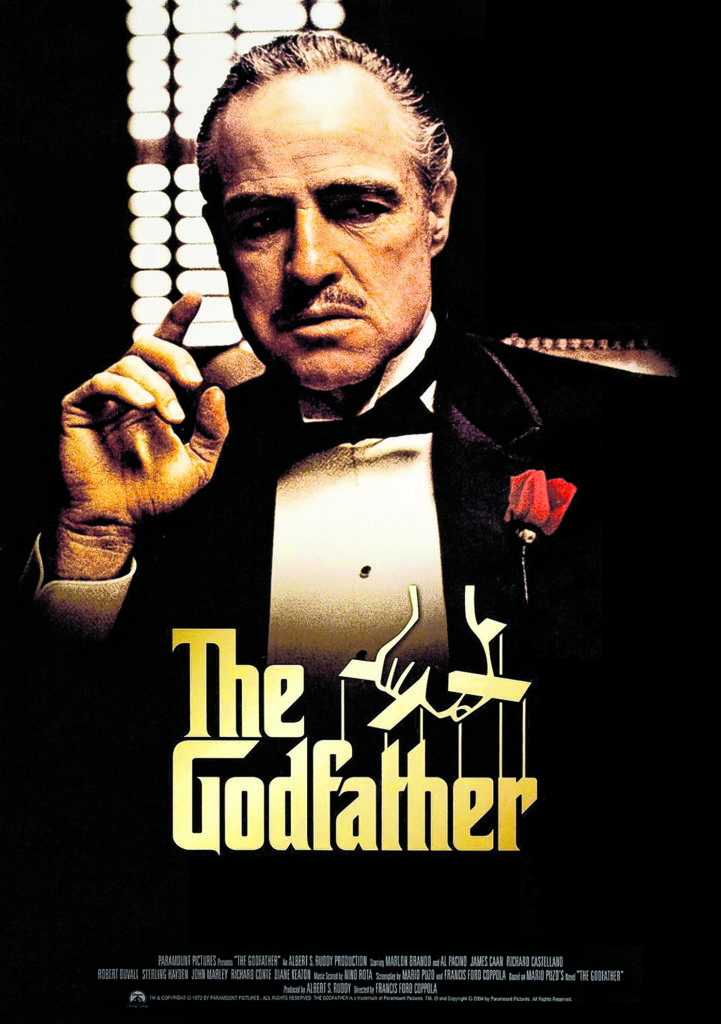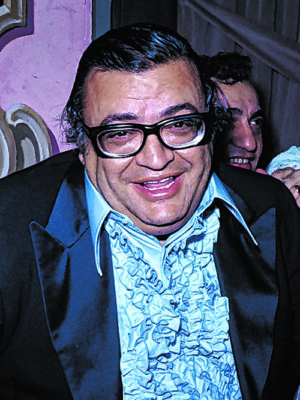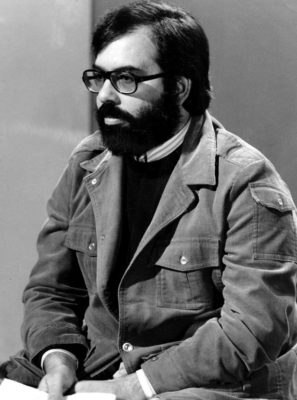This year, the 1972 epic, The Godfather turns 50. The film, starring Marlon Brando, Al Pacino, James Caan, Robert Duvall, Diane Keaton and Talia Shire is running as strong as ever, constantly ranking at the very top of any listings of the greatest American movies.
And it was a couple of Long Island boys who made it happen.

First, came the novel, published to great acclaim in 1970. Mario Puzo, a native of Hell’s Kitchen and later a resident of West Bay Shore, published his first novel, The Dark Arena in 1955. Others followed, including The Fortunate Pilgrim (1955).
As certain debts piled up, Puzo needed the money. He later admitted that a juicy tale might sell. That it did. The Godfather, published in 1969, stayed on The New York Times Best Seller list for 67 weeks. Anticipation for the film was the greatest since Gone With The Wind.

Puzo didn’t just write a pot boiler, full of sex and violence. The novel had solid historical footing. Vito Corleone? Try a composite of Frank Costello and Carlo Gambino. Brando’s raspy voice came from watching tapes of Costello testifying before Congress. Costello, as with Corleone, wanted the organized crime families to stay out of the narcotics business.
Corleone had judges on the payroll. That too was Costello’s real-life strategy. Corleone grabbed the audience’s sympathy as a loyal family man. That was modeled on Gambino.
The latter managed to keep his two sons out of the rackets. That was Corleone’s fondest dream for his younger son, Michael.
Both Michael and Sonny Corleone, Don Vito’s volatile eldest son, were composites of Charles (Lucky) Luciano at various stages of the latter’s career. Moe Greene is based on Bugsy Siegel, the would-be Las Vegas visionary, while Hyman Roth is modeled after Meyer Lansky. The line in The Godfather II, “We’ll be bigger than General Motors” was modified from an aside the elderly Lansky made while caught on a surveillance tape.

For the film, Puzo found a script collaborator in another Long Island native. Francis Coppola, a graduate of Great Neck North High School, originally did not want to direct the film. He believed a film version would put his fellow Italian-Americans in a negative light.
Robert Evans, head of Paramount Studios, wanted someone with Italian ancestry to direct. Prior to The Godfather, Coppola, then 33 years old, had several films under his belt, including Finian’s Rainbow (1968) and The Rain People (1969). He also co-wrote the script for Patton (1970), winning his first Academy Award for Screenwriting.
Coppola relented. Studio heads agreed that only Brando could play Vito Corleone. Both Pacino and Caan auditioned for the Michael Corleone part. Coppola took his time with the film. The man clearly had one of the finest collections of screen talent on hand. The original film Coppola handed over to Evans was only an hour and a half. Evans reportedly rejected that version, claiming that too much of the family drama ended up on the cutting room floor. Coppola went back to the grindstone and produced the three-hour epic that has packed movie houses ever since. The film was also a family undertaking. Coppola directed his older sister, Talia Shire in the role of Connie Corleone, the young bride of an abusive—and turncoat—husband. Coppola’s father, Carmine, wrote the score for the film’s opening wedding scene.
The Godfather went on to win three Academy Awards and numerous other awards. Coppola earned his second Academy Award, this time for Adapted Screenplay.
Coppola was now the hottest director in Hollywood. Both Brando and Duvall came on board for 1978’s Apocalypse Now, a Vietnam War-era epic. Other Coppola directed films have included The Conversation (1974), The Cotton Club (1984) and Peggy Sue Got Married (1986), plus the two popular sequels to The Godfather.
Coppola was born in Detroit to a musical family. His father was a principal flutist for the NBC Symphony Orchestra. The family moved, first, to Woodside, Queens and later to Great Neck. At Hofstra University, Coppola came into his own. He became interested in all facets of film making, including writing and directing. He was president of both the university’s drama group and comedy club. After Hofstra, Coppola attended graduate school at the University of California at Los Angeles (UCLA). He remained in California and his conquest of Hollywood was only a matter of time.
On the 50th anniversary of the film, several of its stars looked back fondly on the film’s rigorous schedule.
“Francis’ genius was not just in directing that film. It was gathering a group of experts who became the experts,” Caan said in a recent interview. “The story, there were a lot of angles in it that had to touch one of us in the audience. Some could have said, ‘Wow, that was a really strong (story) about the family.’ Somebody else could’ve said, ‘See how that works as a gangster?’ … Whatever it was, there was enough out there to interest somebody, no matter what they did for a living.”
“It’s a rough thing to see a pregnant woman being knocked around,” Shire added in her own interview, speaking of a climactic scene. “And I had to move from place to place, and I was honestly terrified because you didn’t want to do another take. Another take meant everything had to be reset and I just wanted to keep going and sometimes things wouldn’t break. And I remember my shoes came off and I kept running, hoping, ‘Feet don’t fail me now. I don’t want to get cut.’ But it was a marvel to shoot and I think it was very potent.”
That it was. Evans’s judgment proved prescient. The audience forgot about the crime aspect and rooted for the Corleone family against their many rivals.


















